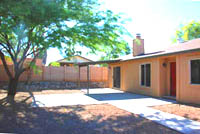What’s a down payment?
A down payment is the amount of money a home buyer must come up with out of his or her own pocket in order to qualify for a mortgage for the remainder. It represents a fraction of the total cost of a home. In the past, down payments were generally 20 percent of a home’s purchase price. But, in line with the trend to make home buying accessible to more people, that number has shrunk. Today, a down payment can be as low as three percent of the purchase price.
If you are struggling to save enough to make a down payment on a home, there are assistance programs available to help.
What are down-payment assistance programs?
Down-payment assistance programs enlist the participation of nonprofit organizations in a bid to help low-income families cover the costs of a down payment (along with, in some cases, closing costs and other upfront cash requirements). Today, nearly one in five borrowers whose mortgages are insured by the Federal Housing Administration (FHA, the largest insurer of mortgages in the U.S.) make use of down-payment assistance programs.
The most prominent of the nonprofit organizations that facilitate these transactions are The Nehemiah Program, AmeriDream Inc. and Partners In Charity. You can learn about these programs on the FHA website.
How do they work?
In simple terms, a down-payment assistance program involves having a home seller provide a home buyer with cash for a down payment. By taking part in this program, a seller can potentially attract a larger number of homebuyers to his or her property. But it’s a bit more complicated than that. Because a federal housing regulation prohibits a seller from directly giving a buyer down-payment money, a third party must be involved. These are the administrators of down-payment assistance programs.
They oversee the transfer of money from the seller to the non-profit organization. In turn, the organization gives the home buyer a similar amount for the down payment on the home (the nonprofit takes a piece of the deal through a percentage of the transaction — typically one percent — or a flat fee). The gift is treated as a down payment. The buyer has no part in the transfer of funds, and he or she is not required to pay it back.
Down payments covered by these programs generally fall in the range of three percent to six percent of the home’s selling cost.
Too good to be true?
There are some excellent down-payment assistant programs. There are also some dubious ones. It’s important to confirm that the nonprofit organization with which you’re dealing is of the former variety before making any commitments.
A good first step is to restrict your dealings to nonprofits that belong to the Home Gift Providers Association (HGPA). The HGPA members are required to adhere to a prescribed set of best practices and a code of ethics. Its website includes a list of member companies.
It’s also wise to sniff out unsavory down-payment assistance providers with a demanding list of questions. Ask each for a record of its financial stability. Ask about partnerships it enjoys with community organizations and businesses. Ask if it ever endorses the practice of allowing borrowers to use their down-payment gifts to pay off bad debts, judgments or liens in order that they might qualify for loans (HGPA discourages this). And stay alert to any sign that the nonprofit is giving kickbacks to real estate agents, mortgage brokers or anyone else involved in the mortgage transaction.
The valuation piece
Sometimes, home sellers inflate the price of their homes to compensate for the gifted money. That’s bad news for a buyer, who can end up paying more than market value for a house. A real estate agent can help you determine if a home is priced realistically.


